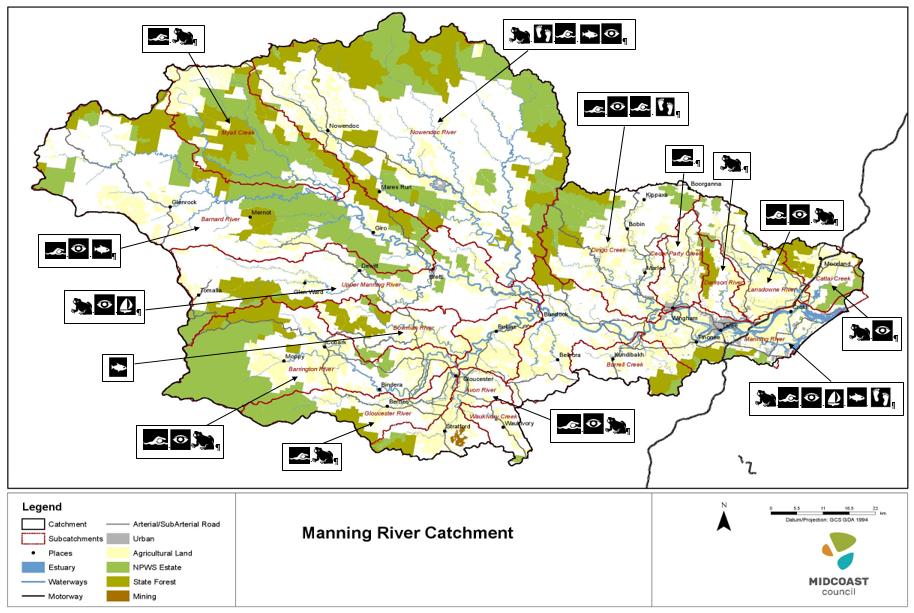14.
Bibliography
Australian Bureau of Meteorology BOM. (2020). Atlas of Groundwater Dependent Ecosystems. Retrieved 6/7/2020 from http://www.bom.gov.au/water/groundwater/gde/map.shtml ANZG 2018. Australian and New Zealand Guidelines for Fresh and Marine Water Quality. Australian and New Zealand Governments and Australian state and territory governments, Canberra ACT, Australia. Available at: www.waterquality.gov.au/anzguidelines Betterridge L. and Rabbidge T. (2016) Water Sharing Plan for the Lower North Coast Unregulated and Alluvial Water, NSW Office of Water BMT (2017). New South Wales Marine Estate Threat and Risk Assessment Report Final Report. NSW Marine Estate Management Authority. BMT (2019). Manning River Floodplain Risk Management Study and Plan. MidCoast Council. Bullock, N. (2019). Understanding the motivators and challenges for farmland and water management in the Manning Valley. Unpublished. Commonwealth of Australia (2006). Australia’s National Programme of Action for the Protection of the Marine Environment from Land-Based Activities, Case Study 24 -Great Lakes. Commonwealth of Australia (2013). Monitoring, Evaluation, Reporting and Improvement Strategy – Caring for our Country and the Biodiversity Fund. Australian Government. Commonwealth of Australia (2017-18). Australia State of the Environment – Groundwater Resources. Retrieved 6/6/2020 from https://soe.environment.gov.au/theme/inlandwater/topic/2016/groundwater-resources Department For International Development (DFID). 2009. Guidance on using the revised logical framework. DPIE 2020. NSW Department of Planning, Industry and Environment, The NSW Monitoring, Evaluation and Reporting Program, Sydney. Available at: NSW Water Management Monitoring, Evaluation and Reporting Framework Ecological (2019). Manning River Coastal Wetland Mapping. MidCoast Council. Geoscience Australia (undated). Groundwater Dependent Ecosystems Retrieved 7/6/2020 from http://www.ga.gov.au/scientific-topics/water/groundwater/understanding-groundwaterresources/groundwater-dependant-ecosystems Glamore, W.C., Ruprecht, J. E. & Rayner, D.S. (2016) Lower Manning River Drainage Remediation Action Plan [Report], Technical Report 2016/01, August 2016, Water Research Laboratory, University of NSW. ASS, estuary, prioritisation, climate change, floodplain, drainage. Global Water Partnership Technical Advisory Committee (GWP TAC) (2000) Integrated Water Resources Management. TAC Background Paper No. 4. Stockholm, GWP.
Manning River ECMP Exhibition Draft V2 June 2021
Page 150






















